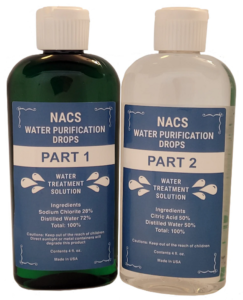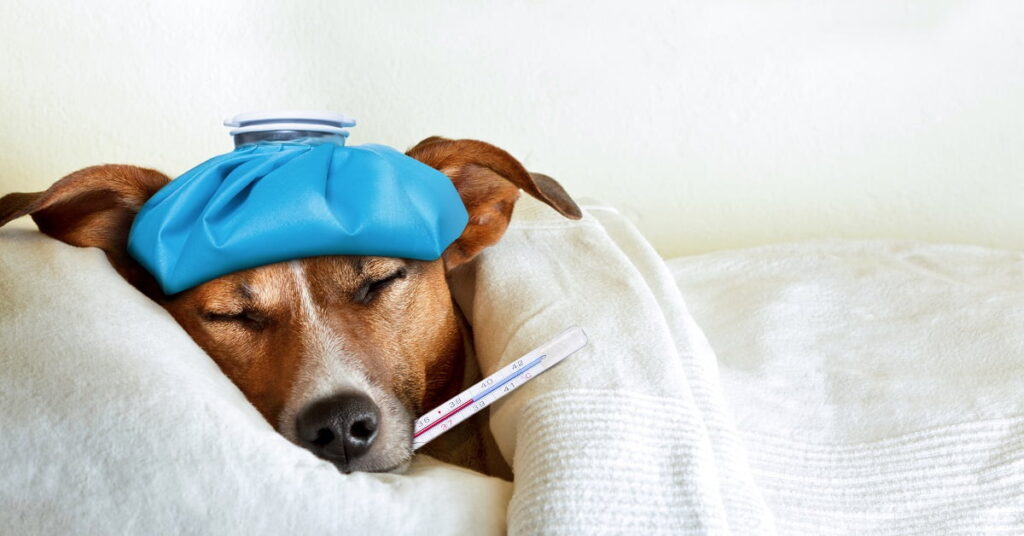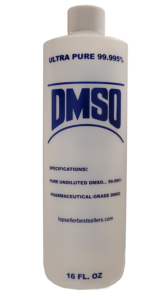When it comes to the health and well-being of our furry friends, veterinarians play a crucial role. These dedicated professionals are not only trained in diagnosing and treating animals but also constantly seek innovative solutions to provide the best care possible. This is where chlorine dioxide comes into the picture.
Chlorine dioxide, often referred to as MMS (Miracle Mineral Solution), has gained recognition among veterinarians for its potential therapeutic benefits. It is a powerful oxidizing agent that can effectively neutralize pathogens such as bacteria, viruses, fungi, and parasites. Veterinarians have been exploring its use in treating a wide range of ailments in dogs and cats.
From skin conditions like dermatitis or hot spots to respiratory issues such as kennel cough or feline asthma, chlorine dioxide has shown promising results. Additionally, it can be used for oral hygiene by combating dental diseases like gingivitis and periodontal infections.
Veterinarians carefully evaluate each case before recommending chlorine dioxide treatment for pets. They consider factors such as the animal’s overall health condition, specific symptoms exhibited, and any underlying medical history. By tailoring the dosage and duration of treatment according to individual needs, they ensure maximum effectiveness while minimizing potential side effects.
By incorporating chlorine dioxide into their arsenal of treatments options, veterinarians are providing pet owners with an alternative approach that may complement traditional therapies or serve as a standalone solution in certain cases. The growing interest in using this compound underscores how veterinary medicine continues to evolve with new advancements for better patient outcomes.
how veterinarians use chlorine dioxide
Veterinarians play a vital role in ensuring the health and well-being of our furry friends. When it comes to treating certain ailments, they often turn to chlorine dioxide as a valuable tool in their arsenal. But how exactly do veterinarians use this powerful compound?
Chlorine dioxide is commonly used by veterinarians for its antimicrobial properties. It can effectively kill bacteria, viruses, fungi, and other pathogens that may cause infections or diseases in dogs and cats.
Veterinary Disinfectant Sanitary Agent
One way veterinarians utilize chlorine dioxide is by using it as a disinfectant for various surfaces such as examination tables, kennels, and surgical equipment. This helps prevent the spread of infectious agents within veterinary clinics or animal hospitals.
For this purpose, veterinarians use a two-part kit to create chlorine dioxide on demand to disinfect or sanitize surface areas. Using a two-part kit of water purification drops such as NACS WPD, one drop of Part 1 is mixed with one drop of Part 2 and allowed to activate for 30 seconds which makes fresh chlorine dioxide. Depending on the strength required and the area to be sanitized more drops may be required in this one-to-one-drop configuration and diluted with water before dispensing via spray bottle.
Treating Pets with Chlorine Dioxide
In addition to surface disinfection, veterinarians also administer chlorine dioxide orally or topically to treat specific ailments in pets. For example, when dealing with dental issues like periodontal disease or gingivitis, chlorine dioxide mouth rinses can be used to kill harmful bacteria and promote oral hygiene.
Furthermore, when faced with skin infections such as dermatitis or hot spots in dogs or cats, veterinarians may recommend using topical solutions containing diluted chlorine dioxide to eliminate the underlying infection-causing organisms.
It’s important to note that while chlorine dioxide has been found effective for these purposes under veterinary supervision; pet owners should never attempt self-treatment without consulting a veterinarian first.
Ailments Common in Dogs
Dogs, our loyal companions, can unfortunately be prone to various ailments throughout their lives. It’s important for pet owners to be aware of these common issues and take proactive measures to keep their furry friends healthy.
One common ailment that dogs often face is skin allergies. Whether it’s caused by environmental factors or food sensitivities, dogs can develop itchy and irritated skin that can lead to discomfort and distress. Another prevalent issue among dogs is dental problems, including gum disease and tooth decay. Regular brushing and professional cleanings are vital in maintaining your dog’s oral health.
Additionally, digestive issues such as diarrhea or vomiting are not uncommon in dogs. These symptoms may indicate underlying health concerns like dietary indiscretion or gastrointestinal infections. Joint problems like arthritis also affect many dogs as they age, causing pain and stiffness in their movements.
Furthermore, ear infections are a frequent occurrence among our canine companions, especially those with floppy ears that provide a warm environment for bacteria growth. Obesity is an all-too-common problem faced by many dogs today due to lack of exercise and poor diet choices.
While this list provides an overview of some common ailments seen in dogs, it’s crucial to remember that each dog is unique with its specific needs and susceptibilities. Consulting with a veterinarian about any concerning symptoms or behaviors exhibited by your beloved pet is always the best course of action for ensuring their well-being.
Ailments Common in Cats
Cats, as adorable and independent as they may be, are not immune to health issues. Just like humans, our feline friends can suffer from a range of ailments that can impact their overall well-being. While some conditions are more common than others, it’s essential for cat owners to stay vigilant and proactive in their pet’s healthcare.
One prevalent ailment among cats is dental disease. Tartar build-up and gum inflammation can lead to pain and discomfort for our furry companions. Regular dental check-ups and proper oral hygiene practices can help prevent this issue.
Another common problem seen in cats is urinary tract infections (UTIs). Symptoms such as frequent urination, blood in the urine, or inappropriate litter box behavior could indicate a UTI. Prompt veterinary attention is crucial to alleviate the discomfort associated with this condition.
Respiratory infections are also relatively common in cats. Feline upper respiratory infection (URI) often manifests as sneezing, coughing, nasal discharge, and lethargy. It’s essential to provide supportive care and seek veterinary treatment if symptoms persist or worsen.
Additionally, obesity is an increasingly prevalent concern among domesticated cats. Overfeeding combined with limited exercise can lead to weight gain which puts them at risk for various health problems like diabetes or joint issues.
These are just a few examples of ailments commonly seen in cats; however every cat is unique so it’s important for owners to pay attention their pet’s individual needs while providing regular vet check-ups.
How to Treat Dogs with Chlorine Dioxide
When it comes to treating dogs with chlorine dioxide, veterinarians have found this versatile compound to be highly effective. Whether your furry friend is suffering from gastrointestinal issues, respiratory infections, or even skin conditions, chlorine dioxide can provide relief.
To start the treatment process, it’s important to consult with a veterinarian who has experience in using chlorine dioxide for pets. They will be able to determine the appropriate dosage based on your dog’s weight and specific condition.

One common method of administering chlorine dioxide is by using drops of Part 1 of the two-part kit only. Part 1 does not require activation as the dog’s stomach acid activates the sodium chlorite in Part 1 when it reaches the stomach, where the chlorine dioxide is made. Part 1 and Part 2 would need to be activated in a one-to-one ratio, just as for disinfection and sanitization, and diluted for topical administration.
DMSO is often added for applying directly to skin surfaces, usually in a one-to-one ration. For example, 1 drop of Part 1 + 1 drop of Part 2 and allowed to activate for 30 seconds = one drop of activated chlorine dioxide which is then diluted by one ounce of distilled water. A standard DMSO solution would be to add the one ounce of chlorine dioxide and distilled water to one ounce of 99%+ DMSO, mixed then applied to the skin area to be treated. Any unused portion should be discarded because the solution becomes inactive soon, and so only mix up what is expected to be used.
Part 1 (sodium chlorite) drops can easily be mixed into your dog’s food or water. It’s crucial to follow the instructions provided by the veterinarian and never exceed the recommended dosage.
For dogs dealing with gastrointestinal issues such as diarrhea or vomiting, chlorine dioxide can help eliminate harmful bacteria and promote healthy digestion. By targeting pathogens in the digestive tract, it aids in restoring balance and reducing symptoms.
Additionally, if your dog suffers from respiratory infections like kennel cough or bronchitis, chlorine dioxide can assist in clearing congestion and alleviating discomfort. It works by killing off viruses and bacteria that cause these respiratory ailments.
When using chlorine dioxide topically for skin conditions such as hot spots or fungal infections, it’s essential to dilute it properly before application. This ensures it doesn’t irritate your dog’s sensitive skin while effectively combating microbes causing inflammation.
Remember that while chlorine dioxide has shown promising results in treating various canine ailments when used correctly under veterinary guidance; each case may vary. Always monitor your pet closely during treatment and report any adverse reactions to your veterinarian promptly.
By exploring alternative treatments like chlorine dioxide under professional supervision; you’re taking proactive steps towards improving your beloved furry companion’s health and well-being!
How to Treat Cats with Chlorine Dioxide
When it comes to treating cats with chlorine dioxide, veterinarians recommend a careful and precise approach. This powerful compound can be used to address a range of ailments in our feline friends. From respiratory infections and parasites to skin irritations and urinary tract issues, the applications of chlorine dioxide are vast.
Before administering any treatment, it’s important to consult with your veterinarian for proper guidance. They will assess the specific condition of your cat and provide tailored instructions on how to proceed. In most cases, chlorine dioxide is administered orally through diluted drops or mixed into their drinking water.
To ensure effective results, consistency is key. Follow the recommended dosage guidelines provided by your veterinarian and maintain a regular treatment schedule. It’s crucial not to exceed the prescribed amount as this might have adverse effects on your cat’s health.
One common method of administering chlorine dioxide is by using drops of Part 1 of the two-par kit only. Part 1 does not require activation as the cat’s stomach acid activates the sodium chlorite in Part 1 when it reaches the stomach, where the chlorine dioxide is made. Part 1 and Part 2 would need to be activated in a one-to-one ratio, just as for disinfection and sanitization, and diluted for topical administration.
DMSO is often added for applying directly to skin surfaces, usually in a one-to-one ration. For example, 1 drop of Part 1 + 1 drop of Part 2 and allowed to activate for 30 seconds = one drop of activated chlorine dioxide which is then diluted by one ounce of distilled water. A standard DMSO solution would be to add the one ounce of chlorine dioxide and distilled water to one ounce of 99%+ DMSO, mixed then applied to the skin area to be treated. Any unused portion should be discarded because the solution becomes inactive soon, and so only mix up what is expected to be used.
Part 1 (sodium chlorite) drops can easily be mixed into your cat’s food or water. It’s crucial to follow the instructions provided by the veterinarian and never exceed the recommended dosage.
It’s worth noting that while chlorine dioxide can be an effective tool in combating various ailments in cats, it should always be used under professional supervision. Your veterinarian will monitor the progress closely and make adjustments as needed.
Remember: every cat is unique, so what works for one may not work for another. Always seek professional advice before implementing any treatment plan involving chlorine dioxide or any other substances.
By combining veterinary expertise with safe usage practices, we can harness the potential benefits of chlorine dioxide while ensuring our furry companions receive optimal care.
which is best chlorine dioxide or sodium chlorite?
When it comes to choosing between chlorine dioxide and sodium chlorite for treating dogs and cats, there are a few factors to consider. Both substances have their benefits and drawbacks, so it ultimately depends on the specific needs of your pet
Chlorine dioxide is known for its powerful disinfectant properties. It can effectively kill bacteria, viruses, fungi, and other harmful microorganisms that may be causing health issues in your furry friend. This makes it an ideal choice for treating infections or preventing the spread of disease.
To determine which option is best for your pet’s treatment, it’s essential to consult with a veterinarian who has experience using these substances. They will assess your pet’s condition and recommend the most suitable solution based on their professional expertise.
Remember that both chlorine dioxide and sodium chlorite should only be used under veterinary supervision. These chemicals must be administered according to specific dosages and guidelines to ensure safety and efficacy.
Whether you choose chlorine dioxide or sodium chlorite depends on various factors such as your pet’s ailment, severity of the condition,and veterinary guidance. Always prioritize seeking professional advice before administering any treatments to your beloved companion!
Best Use Methods:
- Start with a low dosage: When using chlorine dioxide to treat your pets, it’s important to start with a low dosage and gradually increase it over time. This allows their bodies to adjust to the treatment and minimizes any potential side effects.
- Follow the veterinarian’s instructions: Your veterinarian is the best source of information when it comes to treating your pets with chlorine dioxide. They will provide you with specific instructions on how much to use and how often to administer the treatment.
- Administer orally or topically: Chlorine dioxide can be administered orally by adding it to your pet’s water or food. It can also be applied topically, depending on the condition being treated. Your veterinarian will guide you on which method is most suitable for your pet.
- Monitor closely for any adverse reactions: While chlorine dioxide is generally safe for pets when used correctly, it’s important to monitor them closely for any adverse reactions. If you notice any unusual symptoms or behaviors, contact your veterinarian immediately.
- Maintain good hygiene practices: Alongside using chlorine dioxide as a treatment, maintaining good hygiene practices is crucial in keeping your pets healthy and preventing further ailments from occurring.
Remember that every pet is unique, so what works for one may not work for another.
Always consult with a veterinary professional before starting any new treatments or medications for your beloved furry companions!
Maintenance Protocol for Cats and Dogs
Use table 1 to determine the number of Sodium Chlorite drops needed for your cat’s or dog’s water bowl. Their stomach’s Hydrochloric Acid will convert the Sodium Chlorite to Chlorine Dioxide.
Table 1
| Sodium Chlorite Drops | Water |
| 5 | 1 Quart (0.946 Liters) |
| 10 | 2 Quarts (1.892 Liters) |
| 15 | 3 Quarts (2.839 Liters) |
| 20 | 1 Gallon (3.785 Liters) |
Steps for Adding Sodium Chlorite Drops to a Cat’s and Dog’s Water Bowl
1. Place Sodium Chlorite drops (part 1) in a glass or ceramic water bowl.
2. Add filtered or distilled water to the water bowl and stir with a plastic spoon.
3. Place the water bowl in an ideal location for the cat or dog to drink from. Avoid areas with direct sun which can breakdown the Sodium Chlorite.
Severe Case Protocol for Cats and Dogs
For severe cases, use Table 2 to determine the number of Sodium Chlorite drops your cat or dog will need for their body weight. Their stomach’s Hydrochloric Acid will convert the Sodium Chlorite to Chlorine Dioxide.
Table 2
|
|
Steps for Making Severe Case Sodium Chlorite Solution for Cats and Dogs
1. Place 6 drops of Sodium Chlorite (part 1) in a glass cup.
2. Add 4 oz (120ml) of filtered or distilled water to the glass cup and stir with a plastic spoon.
3. Use a plastic syringe with ml markings to extract water containing Sodium
Chlorite drops as per the weight of the animal from Table 2.
4. Give to the cat or dog orally every 15 minutes (4 times an hour) for the first two hours. Then, every hour thereafter for a total of 10 hours.
Frequently Asked Questions
Q: Can my cat and dog drink from the same water bowl?
A: Yes, your cat and dog can drink from the same water bowl. They will each drink what they
need per their body weight. See table 1 for proper dosing of their water bowl.
Q: How often should the water in the cat’s or dog’s water bowl be changed?
A: The water in the cat’s or dog’s water bowl should be changed daily. This will ensure proper dosing due to possible activation or breakdown of Sodium Chlorite. See table 1 for proper dosing of their water bowl.
Q: Can I use a cat and dog water fountain bowl?
A: No, cat and dog water fountain bowls are typically equipped with water filters. They have the ability to remove the Sodium Chlorite from drinking water.
Q: Can my cat or dog smell the Sodium Chlorite drops in their water bowl?
A: Cats and dogs are known for their very strong sense of smell. They can smell traces of Sodium Chlorite in their drinking water, and most will not mind. However, most cats and dogs tend to stay away from activated Sodium Chlorite (Chlorine Dioxide) due to its Chlorine-like odor.
Q: Per table 1 “Maintenance Protocol,” will my cat or dog drink too much water with Sodium Chlorite drops?
A: No, cats and dogs will drink what they need per their body weight.
Q: Why is my cat or dog not getting better after following the protocols?
A: Antioxidants are Chlorine Dioxide’s worst enemy. They will freely donate electrons to Chlorine Dioxide and take away its ability to oxidize (destroy) pathogens, cancers, and toxins.
Also, cats and dogs naturally produce Vitamin C, which is an antioxidant. Continue following the protocols, however, make sure to avoid all foods containing antioxidants. This means no fruits, vegetables, or supplements. Antioxidants can only be taken in the evening or after completing their protocols for the day.
Q: How do I know if I should use the maintenance dose or the severe case dose?
A: The severe case dose is for an animal that cannot get up and get its own water.
Q: Can I use the protocols on other animals besides cats and dogs (Horses, birds, etc.)?
A: Yes, other animals can follow the same protocols. However, the Maintenance Protocol
dosing must be adjusted according to the amount of water the animal will drink (See Table 1)
or the Severe Case Protocol as per the weight of the animal (See Table 2).
Warnings and Cautions:
When it comes to using chlorine dioxide for treating dogs and cats, there are a few important warnings and cautions that pet owners should keep in mind. First and foremost, it is crucial to consult with a veterinarian before administering any type of treatment to your furry friend.
While chlorine dioxide can be effective in certain situations, it is not suitable for every ailment or condition. Certain health issues may require alternative treatments or medications. Additionally, the dosage and administration of chlorine dioxide should always be done under the guidance of a professional.
It is also essential to remember that chlorine dioxide can have side effects in some animals. These may include gastrointestinal upset, vomiting, diarrhea, or allergic reactions. If you notice any adverse symptoms after giving your pet chlorine dioxide, discontinue its use immediately and seek veterinary advice.
Furthermore, never attempt to mix or combine chlorine dioxide with other substances without proper knowledge or instruction from a veterinarian. Improper mixing could lead to harmful chemical reactions that could put your pet’s health at risk.
Always follow the recommended dosage instructions provided by your veterinarian when using chlorine dioxide for pets. Overdosing can result in serious complications and harm your beloved companion.
By being cautious and informed about the proper use of chlorine dioxide for treating dogs and cats, you can help ensure the safety and well-being of your furry friends. Always prioritize their health by seeking professional advice whenever necessary!





Leave a Reply